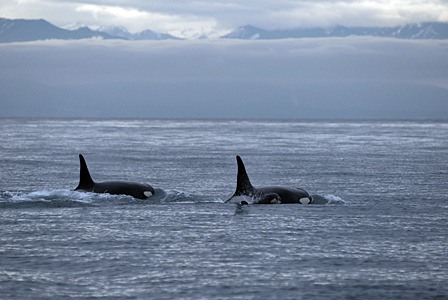The ranks of the Southern residents grew by one, as Christmas came early in the killer whale world.
The San Juan Island-based Center for Whale Research confirmed that a newborn orca was seen off the south end of San Juan Island in early November. The birth brings the population of southern residents, considered endangered in the U.S. and in Canada, to 87.
It’s the second newborn to join the southern residents, and L-pod, in the past three months. L-116 was sighted Oct. 13.
Designated as L-117 by the Center, the most recent newborn is believed to have been just a couple weeks old when it was sighted in the close company of several L-pod females on Dec. 6 near Hein Bank and the east entrance of the Strait of de Fuca. The calf alternated beside L-5, a 46-year-old female considered beyond reproductive age, and L-48, a 20-year-old female, according to the Center’s Debbie Sharpe, a research assistant.
Despite its proximity to those two females, Sharpe cautioned that the identity of L-117’s mother has yet to be determined and would be only speculation at this point.
Still, Sharpe said that L-117 appears to be a very young calf given its size and its color, an orange hue common to newborns, when it was photographed by the Center’s Dave Ellifrit.
“It definitely was little and orange,” Sharpe said.
Known as southern residents, the killer whales that make their seasonal home in the San Juans’ waterways, were declared endangered under federal law in November 2005. Today, the population, a loosely-knit group consisting of three pods, J, K and L, totals 87. They are designated “endangered” by Washington state and in Canada as well.
The center, which maintains a census of the Southern Resident killer whales for the National Marine Fisheries Service, reported that five whales were born and three were missing in 2009, nudging the year-end population to 87.
Sharpe added that Ellifrit also spotted L-116 during a recent outing off San Juan’s west side.
“He said L-116 appears to be fattening up nicely,” she said.




